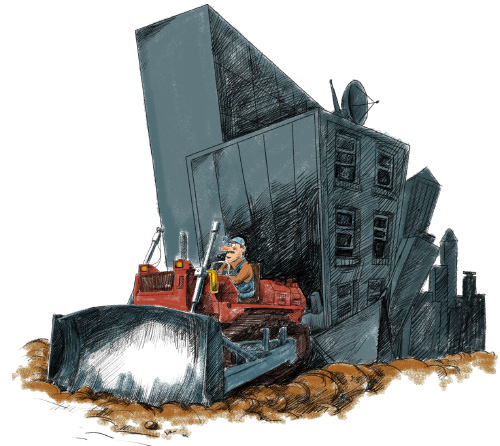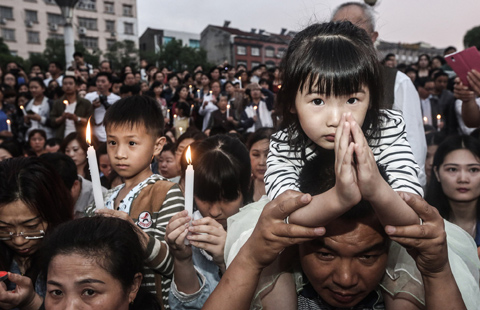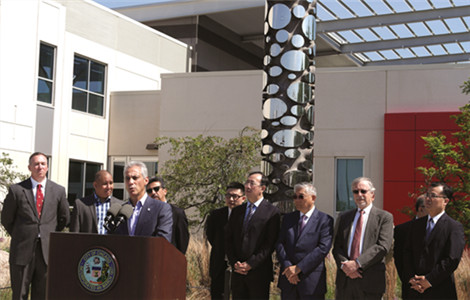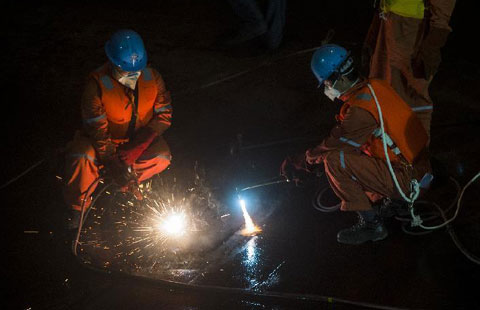14 cities to draw red line to stop urban sprawl
Updated: 2015-06-05 07:48
(Ecns.cn/chinadaily.com.cn)
|
||||||||
 |
| [Photo / China Daily] |
Fourteen cities will draw the line on urban development this year to control sprawling expansion, Southern Metropolis Daily reported, citing an official from the Ministry of Land and Resources (MLR).
Zhang Xiaoling, assistant to the director of the MLR's Institute of Land Surveying and Planning, said cities will be banned from developing past the determined boundaries.
The MLR worked with the Ministry of Housing and Rural-Urban Development in July 2014 to launch the program in order to decide the boundaries for urban development. The 14 cities included in the project are Beijing, Shenyang, Shanghai, Nanjing, Suzhou, Hangzhou, Xiamen, Zhengzhou, Wuhan, Guangzhou, Shenzhen, Chengdu, Xi'an and Guiyang.
China plans to finalize the boundaries to prevent urban sprawl for more than 600 cities. The project may take at least two to three years due to some difficulties, according to Zhang.
The boundary refers to the demarcated development space appropriate to the terrain, natural ecosystems, environmental carrying capacity, and prime farmland in an area.
Zhang said drawing the line needs to take full consideration of a city's projected scale, land use, and population migration.
She said that the country's urbanization is currently widespread and disorderly, featuring the building of large squares or new city zones.
China will place emphasis on the effective use of land resources and rational urban development in the future amid efforts to stop the blind expansion of cities, it was added.
Xie Zhiping, an environmental official in East China's Anhui province, said setting such boundaries may help prevent the creation of ghost towns.
In the past, Beijing has announced to control urban expansion. Experts believe urban sprawl can cause many problems, including excessive population density and strained supplies of energy and other resources.
Related: Solutions needed for urbanization
Although urbanization has been an essential ingredient in China's growth and development over the past 30 years, the transformation to a predominantly city-based nation brings with it societal ramifications and financial implications.
Most of the issues that confront China's urbanization process deal with financing costs and methodologies for sustainable economic development. Given China's economic model and history of centralized planning, one would expect the central government to play a key role in supporting local government budgets.
In reality, however, the central government has provided only limited financial support to local governments, leaving the job mostly to local government officials and the city leadership, for example. the Party secretary and mayor.
- China rescuers right ship to speed up search for missing
- More countries send condolences over China's cruise ship accident
- Test centers set stage for smooth gaokao
- 14 cities to draw red line to stop urban sprawl
- Personal items of sunken ship passengers found
- Death toll rises to 75 from capsized ship

 Operation underway to turn the ship over
Operation underway to turn the ship over
 Prayers held for ship passengers
Prayers held for ship passengers Warriors beat Cavs in Game One OT thriller
Warriors beat Cavs in Game One OT thriller
 Cannavaro's Evergrande life in photos
Cannavaro's Evergrande life in photos
 Ten photos you don't wanna miss - June 5
Ten photos you don't wanna miss - June 5
 Chicago gets a present from Shanghai
Chicago gets a present from Shanghai
 Rescuers cut into capsized ship in search for survivors
Rescuers cut into capsized ship in search for survivors
 Search-and-rescue operation enters third day
Search-and-rescue operation enters third day
Most Viewed
Editor's Picks

|

|

|

|

|

|
Today's Top News
Rescuers right ship to speed up recovery
Overseas real estate investment hits record $7.5b in Q1
Editorial: Aquino shows a lack of sense or sensibility
60% of Chinese youth OK with premarital sex: survey
65 bodies found, more than 370 still missing
Ex-FIFA executive detailed bribes in 2013 secret guilty plea
HK economy will suffer if reform fails, tycoon says
Beijing 'shocked' at Nazi comparison by Philippines
US Weekly

|

|






